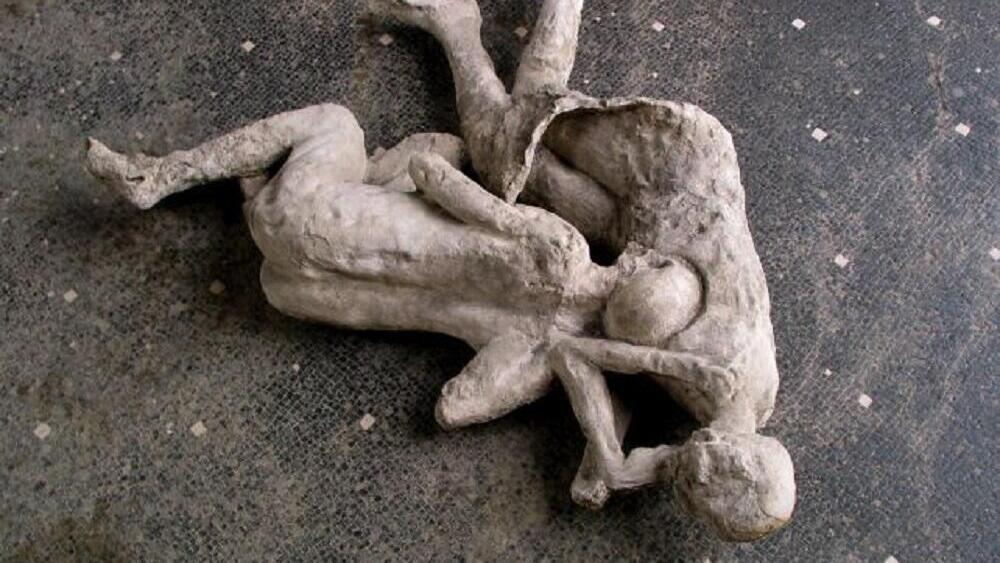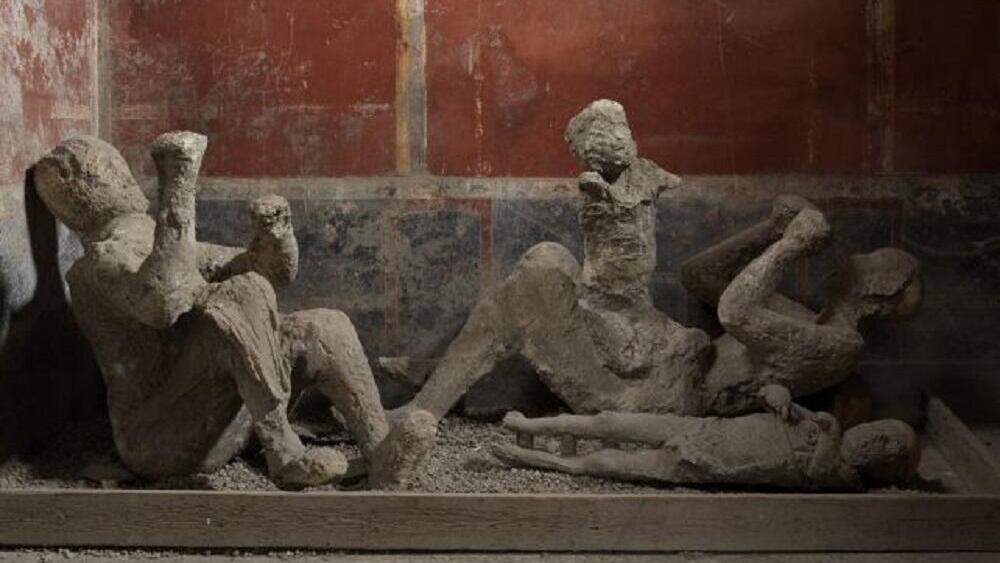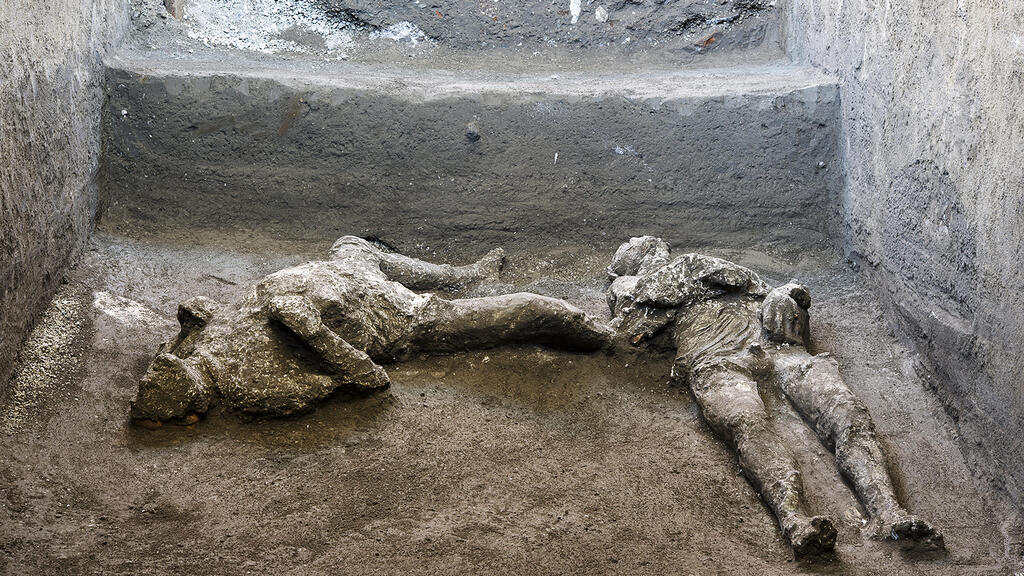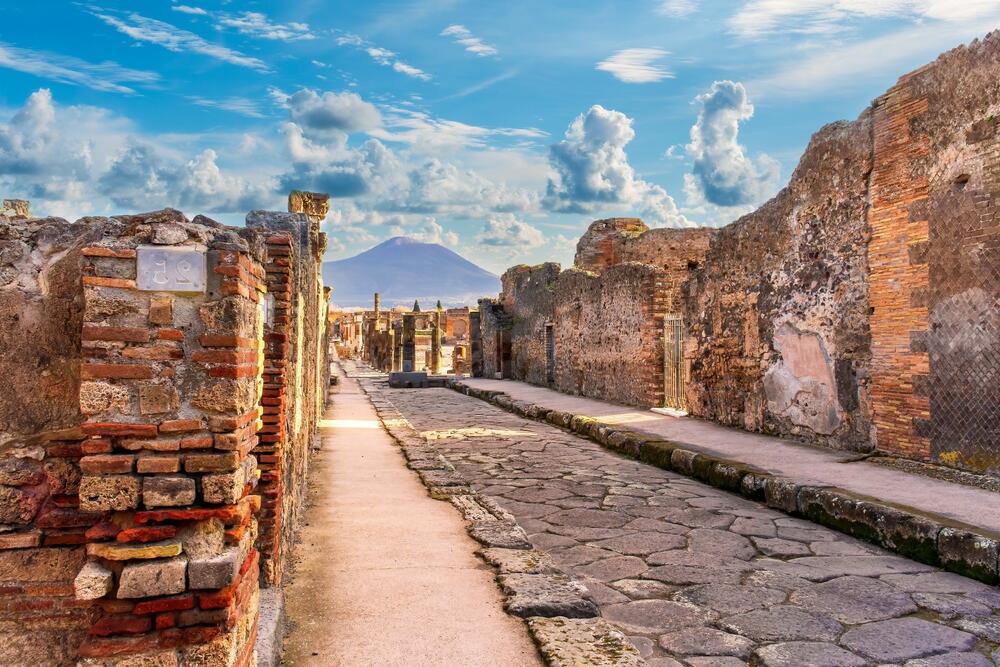Getting your Trinity Audio player ready...
A new study published in the Current Biology journal sampled ancient DNA from plaster casts of Roman victims of Mount Vesuvius' eruption in Pompeii and analyzed them, showing traditional assumptions of the victims’ identities and familial relations were misguided.
Numerous eruptions of the Somma-Vesuvius complex — a volcanic area located along the eastern shore of the Bay of Naples in Italy's Campania region — were accompanied by extensive pyroclastic flows and surges.
Bodies found in Pompeii
(Video: Reuters)
Evidence of these incidents is visible in the cities of Pompeii and Herculaneum, which were buried along with their inhabitants in the volcanic eruption of Mount Vesuvius in 79 CE. This famous eruption, by one of Italy's three active volcanoes, preserved parts of the cities and their inhabitants, making the area one of the world's most impressive historical time capsules.
After analyzing the samples, it was revealed that the sexes and family relations of some locals didn’t align with traditional interpretations. "The scientific data we provide do not always align with common assumptions," explained Prof. David Reich, a geneticist at Harvard Medical School’s Department of Genetics and a co-author of the study.
4 View gallery


Victims of Pompeii wrongly assumed to be related
(Photo: Archaeological Park of Pompeii)
“For instance, one notable example is the discovery that an adult wearing a golden bracelet and holding a child, traditionally interpreted as a mother and child, were an unrelated adult male and child. Similarly, a pair of individuals thought to be sisters, or mother and daughter, were found to include at least one genetic male. These findings challenge traditional gender and familial assumptions,” he added.
The research team, which included archaeogeneticist Dr. Alissa Mittnik from Harvard University and the Max Planck Institute for Evolutionary Anthropology in Germany, as well as Italian anthropologist Dr. David Caramelli from the University of Florence, recognized the potency of ancient DNA analysis for gaining deeper insights into the diversity and origins of the city's inhabitants.
4 View gallery


Four individuals in Pompeii thought to be realted
(Photo: Archaeological Park of Pompeii)
A total of 14 individuals, whose remains were preserved through plaster casts (from among 86 preserved individuals scattered across the city), were sampled. Although researchers were able to retrieve high-quality samples from only 6 individuals, given the extreme heat during the volcanic eruption and the casting process that hindered long-term DNA preservation, they still gained significant insights into these individuals' genetic relationships, gender and origins.
What they discovered contradicted long-standing assumptions based solely on the physical appearance and location of the plaster-cast victims. The genetic data provided valuable insights into the origins of Pompeii's residents, revealing that the ancient Roman city had a diverse genetic background, primarily from the eastern Mediterranean and the Near East. This, according to the researchers, underscores the cosmopolitan nature of the Roman Empire.
"Our findings have significant implications for the interpretation of archaeological data and the understanding of ancient societies," Dr. Mittnik said. "They highlight the importance of integrating genetic data with archaeological and historical information to avoid misinterpretations based on modern assumptions. This study also underscores the diverse and cosmopolitan nature of Pompeii’s population, reflecting broader patterns of mobility and cultural exchange in the Roman Empire.”
Get the Ynetnews app on your smartphone:






